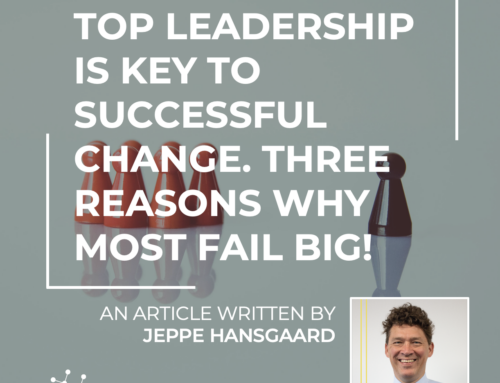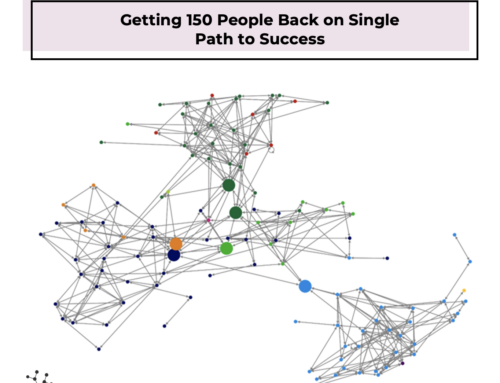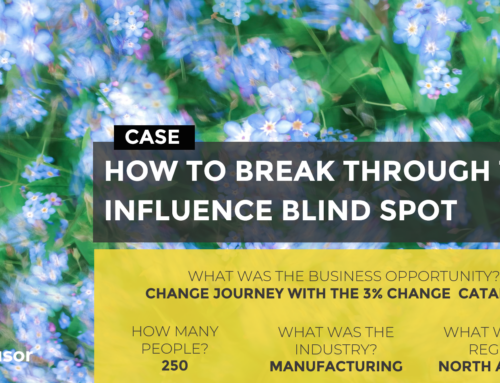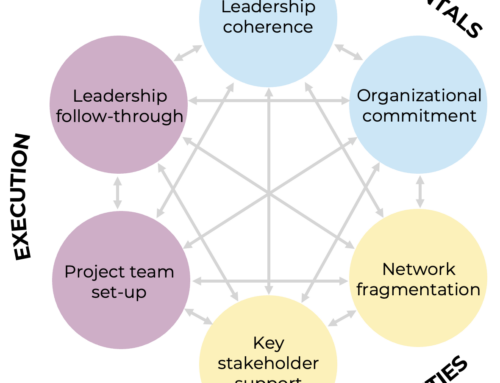Master Change on a Budget: Ready, Set… Change!
Bold leaders consistently choose Innovisor to accelerate their change for three main reasons: they face time constraints and a tight budget, all while the end goal is defined but the path to it is unclear.
This is exactly the situation faced by an executive at a technology company providing a disrupting and long-lasting common good for millions of people. In just a couple of years, it grew to 300 people and was embarking on further expansion.
The executive knew that this transformation would only be a success if they were intentional about what friction needed to be reduced, who they needed to engage with on this, and how to do this.
The Change Accelerator was the perfect fit. It helped the organization understand what the priorities were, based on insights into four key #SIXCHANGEBLOCKERS, and who they needed to onboard through the #THREEPERCENTRULE .
What were the priorities of this fast-growing technology organization?
When gearing up for a change project, it is essential to consider potential pitfalls. Are the leaders aligned? Are the employees committed? Is the organization coherent? Are the stakeholders on board?
Four out of #SixChangeBlockers were evaluated. As a result, the executive got answers to the questions, such as:
- Does the leadership team work as ONE, or are they not pulling in the same direction?
- Is the organizational network coherent, or is it fragmented (or even disconnected)?
- Are the key stakeholders – the informal change catalyst better known as the #ThreePercentRule and the leader – aligned, or are they not on board with the change journey?
- Are the employees committed to the organization, or do they not support the change?
The most pressing blocker to change was linked to the organizational network. The IT organization – a pivotal part of this technology organization marked as purple in this network visual – was disconnected from the rest of the organization. It only got connected to the rest of the organization through a handful of leaders – marked as squares.
The change blocker or problem was identified that was holding them back from accelerating their change.

Who needed to be on board to combat the change blocker?
The next step was about knowing who the organization should engage with to combat the change blocker.
Eight employees representing their locations were identified with the #ThreePercentRule algorithm. The employees were the organization’s informal change catalysts because collectively they shaped the minds and hearts of 92% of their colleagues. This influence was unknown by the change catalysts themselves. It was something they had earned informally.
How to combat the change blocker?
The second part of the solution to the identified change blocker was about knowing the concrete actions you must take with the identified informal change catalysts.
The executive received a crisp guide on how to restore cohesion and how to set up for change success while expanding markets and growing as an organization.

CONCLUSION
The Change Accelerator helped this executive to get a roadmap to navigate the complexities of expansion while growing as an organization, ensuring that every step was strategic and purposeful. Driving impact with greater accuracy in a fast way, while saving money, was what made this organization succeed.
After the Change Accelerator, the executive was ready to embark on her change project.
Are you ready for yours?








